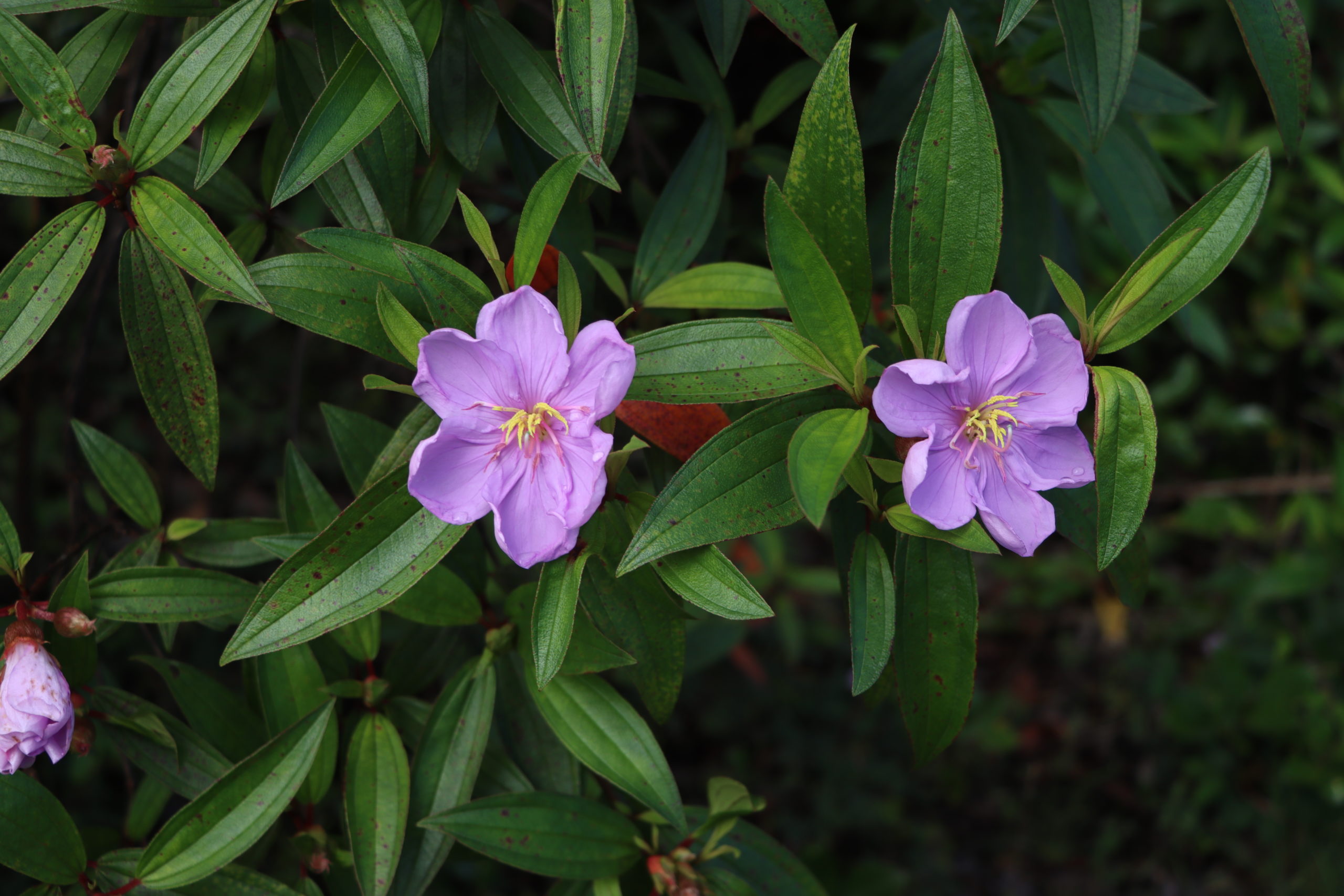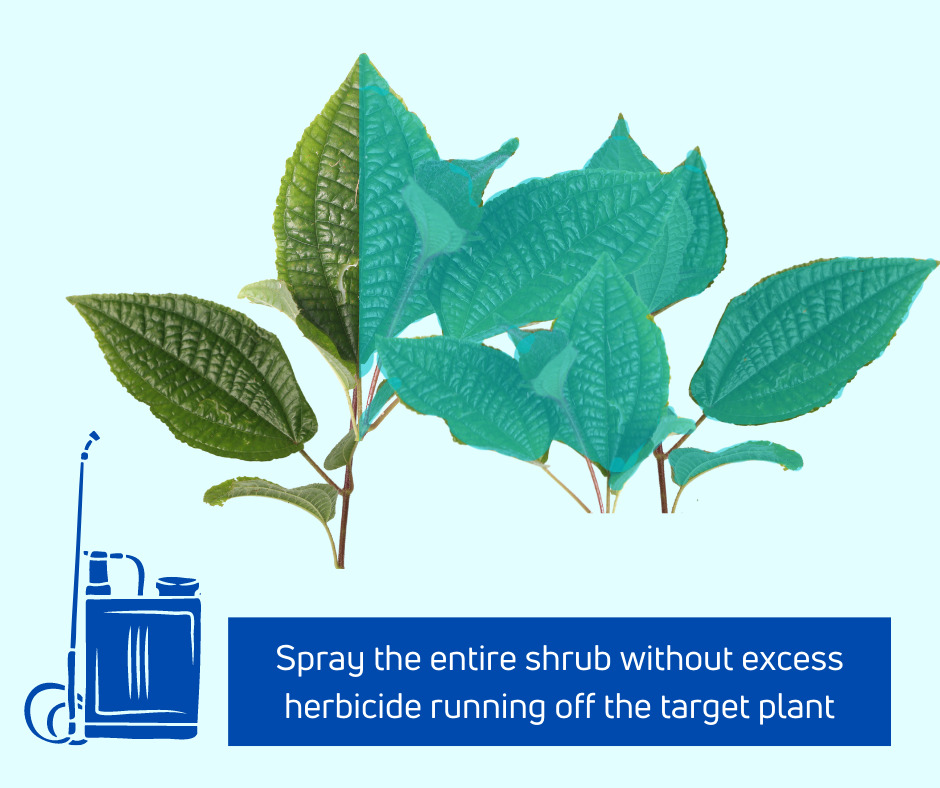
Method: Foliar
Foliar application is a method that involves the use of a sprayer to coat the leaves of a specific target plant with herbicide. This method is a good choice for controlling areas dense with invasive vegetation, such as Himalayan raspberry and blackberry. The leaves absorb the herbicide and carry it throughout the plant and into the roots. Keep in mind that weather can impact the success of your treatments, so make sure to do your applications in optimal conditions. Refrain from treating in the rain or during a drought.
The foliar application method is effective on shrubs and other plants that dominate the landscape, such as clidemia, sleeping grass, pilau maile, and melastoma.
- Always read and follow the directions on the product label.
- Spray the entire shrub without excess herbicide running off the target plant.
- It is important to control spray drift doing your applications. Do not treat in windy conditions.

This illustration shows how important it is to hit each leaf with herbicide to achieve proper control.
Pesticide Safety
Always make sure to read the entire product label before mixing and applying pesticides. It will provide you with the information you need to safely and effectively use the product. Be sure to wear the appropriate personal protective equipment (PPE) as specified on the label, such as a long-sleeved shirt, long pants, close-toed shoes, chemical-resistant gloves, and protective eyewear. Store pesticides out of reach from children and pets in a garden shed or well-ventilated area. It is important to make sure that pesticides are never stored in cabinets with or near food, animal feed, or medical supplies.
- How to read a pesticide label – download pdf
- Read the label: protect your household – download pdf
- Protecting yourself while using pesticides – download pdf
- Safely storing pesticides – download pdf

